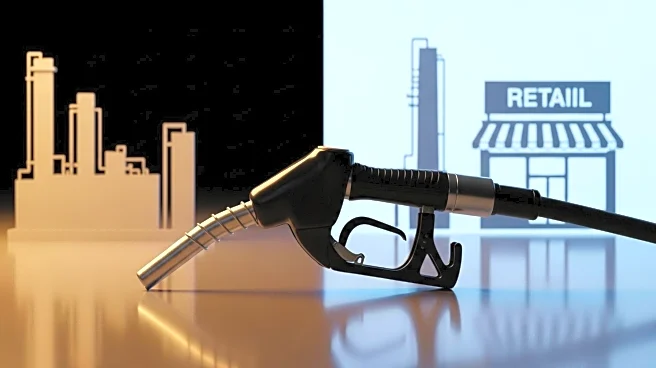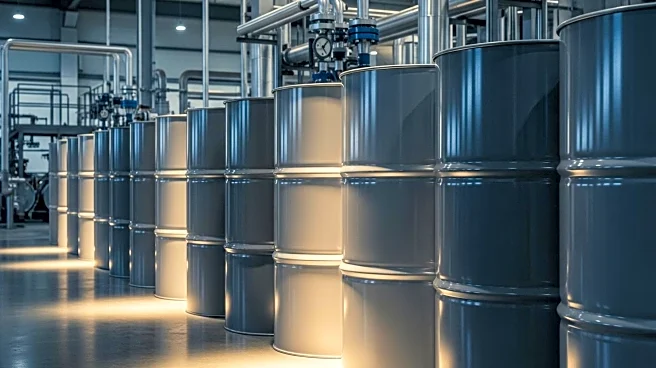What's Happening?
The national average retail price of regular-grade gasoline in the U.S. has decreased slightly, with a 1.9 cents per gallon drop over the past two weeks, reaching $3.27 per gallon. This decline is attributed to seasonal demand reduction and resolved refining and pipeline issues. However, crude oil prices have risen, which may lead to an increase in gasoline prices if sustained. U.S. refiners have experienced a significant loss in gasoline margins due to rising oil prices, while retailers have seen a 12.6 cents per gallon improvement in margins. Retailers may soon pass some of this margin increase to consumers as they adjust to pump price competition amid weakening sales.
Why It's Important?
The fluctuation in gasoline prices and margins has significant implications for both consumers and the energy industry. Retailers benefiting from increased margins may face pressure to lower prices to maintain sales volume, impacting their profitability. Conversely, refiners are challenged by reduced margins, which could affect their operational strategies and financial health. The potential rise in gasoline prices due to higher crude oil costs could strain consumer budgets, especially as seasonal demand decreases. This dynamic highlights the interconnectedness of global oil markets and domestic fuel pricing, influencing economic conditions and consumer behavior.
What's Next?
If crude oil prices continue to rise, gasoline prices may increase, reversing the current trend of price stability. Retailers might need to adjust their pricing strategies to remain competitive, potentially leading to price fluctuations at the pump. Refiners may seek ways to mitigate margin losses, possibly through operational adjustments or strategic partnerships. The ongoing geopolitical tensions affecting oil supply, such as those involving Russia, will likely continue to influence crude oil prices and, consequently, gasoline pricing in the U.S.












